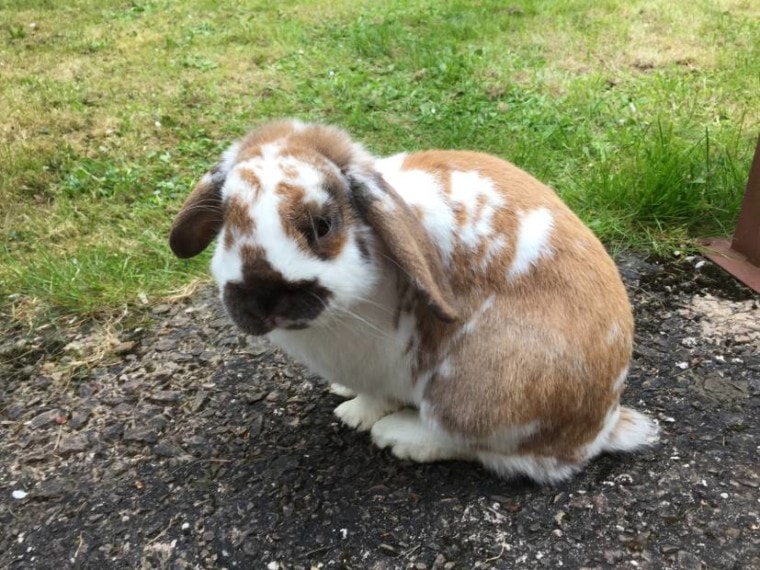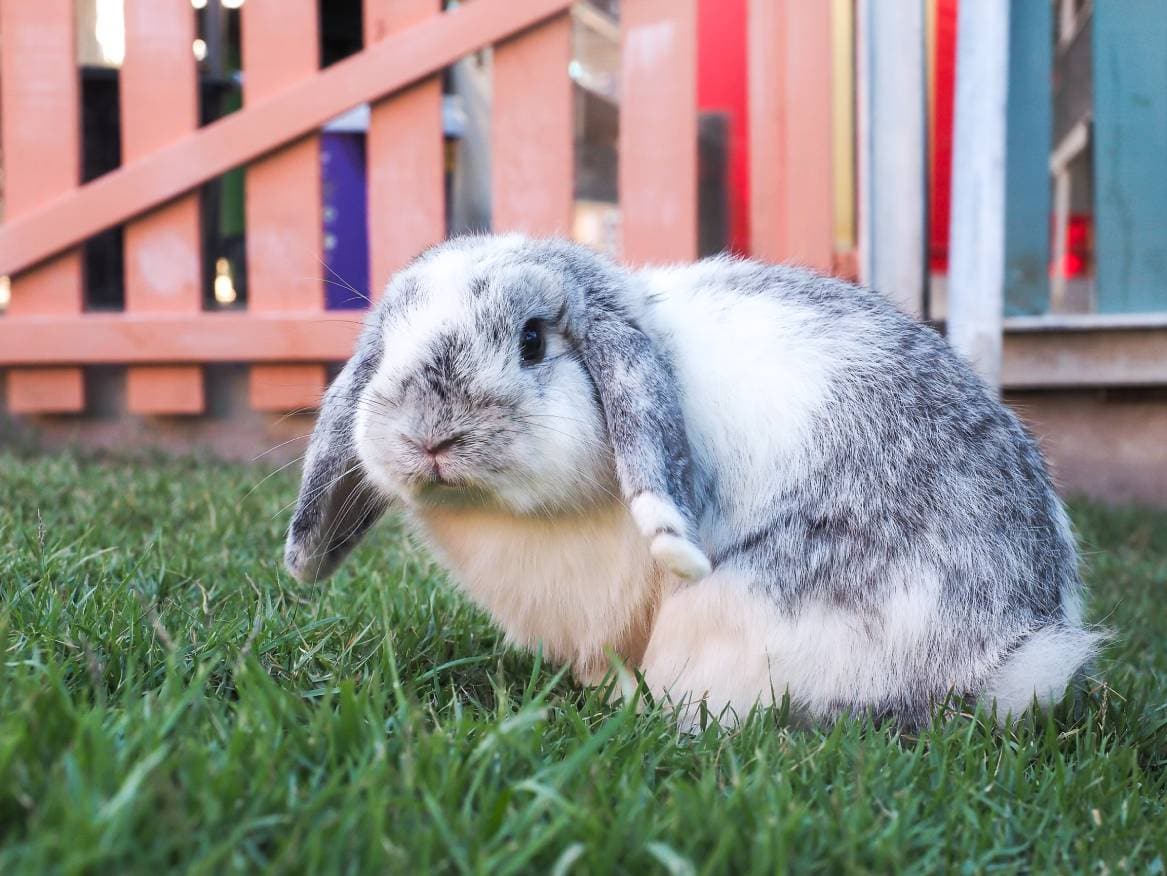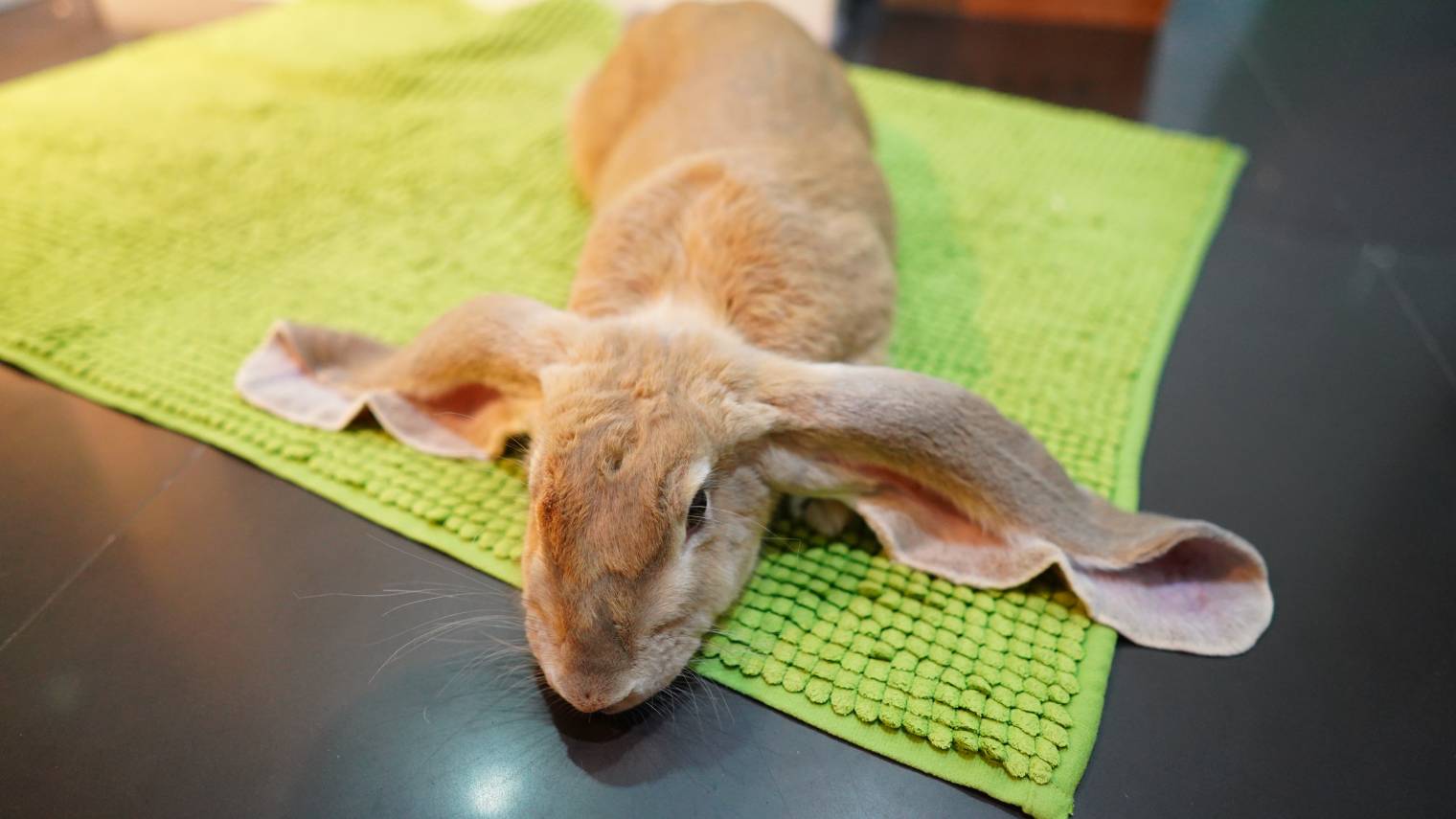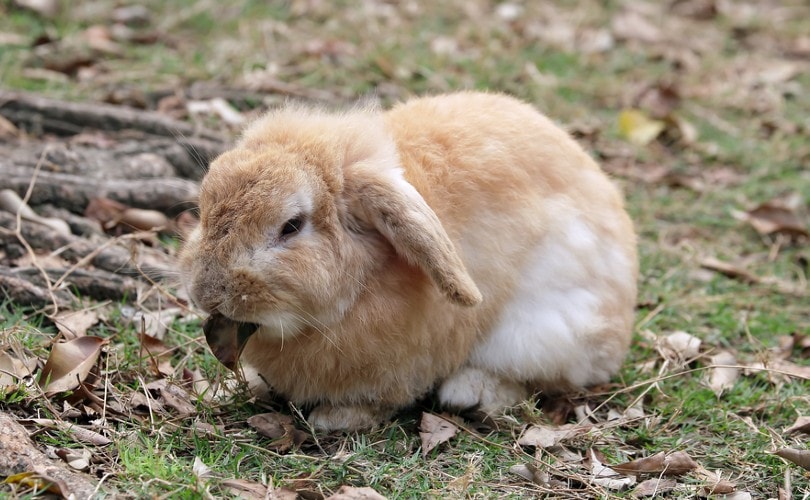
Click to Skip Ahead
English Lops were one of the first types of rabbits to be bred as exhibition animals. Today, these rabbits are popular household pets around the world. English Lops are considered a fancy breed that gets to be about 10 pounds and 18 inches long when fully grown. They have long, floppy ears that help regulate their body temperature.
These rabbits have short fur that snaps back into place if it is rubbed in the opposite direction of their natural grain. They do not shed much or need extra care in the way of keeping their coat clean. These are not highly active animals, and as a result, they are prone to becoming overweight. Want to learn more about this fabulous furry pet? Read on!
Quick Facts about English Lop Rabbits
| Species Name: | Oryctolagus cuniculus |
| Family: | Leporids |
| Care Level: | Moderate |
| Temperature: | 55-75 degrees |
| Temperament: | Easy-going, fun-loving |
| Color Form: | Black, white, blue, opal, fawn, tort, etc. |
| Lifespan: | 5-8 years |
| Size: | 9-11 pounds |
| Diet: | Hay, grasses, wheat, vegetables, fruit |
| Minimum Tank Size: | 12 square feet and exercise space |
| Tank Set-Up: | Sleeping hutch and exercise pen |
| Compatibility: | Kids, adults, other rabbits |
English Lop Rabbit Overview
The English Lop rabbit is beloved by children and adults alike. These animals are soft and cuddly, easy-going, curious, and interactive. They require a moderate amount of grooming and care, albeit much less than the average cat or dog. Their long, floppy ears are fun to look at, but they can be an obstacle while trying to hop and move around.
Therefore, these rabbits tend to be more sedentary than other breeds. However, they still need room to roam around and play with toys when they feel like it. English Lops are a bit larger than most other rabbit breeds found on the market, and they come in a wide variety of colors, including fawn, black, blue, white, and multicolored.
These rabbits can live both indoors and out, but they do not do well in extremely cold or hot temperatures. If temperatures reach below 50 degrees or above 80 degrees, they should be brought indoors, where temperatures are controlled. They love fresh vegetables, but their main food staple should be hay and grass pellets.
How Much Do English Lop Rabbits Cost?
Most pet shops sell English Lop rabbits for between $50 and $75, give or take. The exact price depends on many things, such as where the rabbits are sourced from, how long the pet shop has been taking care of them, and how much veterinarian care the rabbit has had. Any English Lop rabbit that you consider buying should have had their initial vaccinations and a checkup by a qualified veterinarian.
Typical Behavior & Temperament
English Lop rabbits are gentle, loving, and downright lazy. They love cuddling with their human family members and playing with interactive toys, but for the most part, they prefer to spend their time sprawled out and relaxed. They enjoy the company of children who are not pushy or rambunctious.
These rabbits can get along with any other breed of rabbit and do not mind sharing a large habitat with one or more other rabbits. They are low maintenance and do not need tons of space to live in, which makes them a perfect pet for both apartment and small house dwellers.

Appearance & Varieties
Large and soft are the first things that come to mind when mentioning the English Lop rabbit. They are distinguishable from other rabbit breeds due to their huge, floppy ears that can grow up to 23 inches long! They can weigh between 9 and 11 pounds and get up to 33 inches in length when adults.
English Lop rabbits are not the largest breed out there, but they are visibly larger than most rabbit breeds. These rabbits have wide noses, alert eyes, and big heads that give them a sincere look. They come in many different colors and can be multicolored, or broken up with white.
How to Take Care of an English Lop Rabbit
Caring for an English Lop rabbit is moderately easy as far as pets go. They need access to water and proper food, a safe place to sleep, explore, and play, and attention from their human family members daily. Here is everything that you need to know about caring for one of these beautiful rabbits.
Habitat, Tank Conditions & Setup
Every English Lop rabbit should live in an enclosed habitat for their own safety. Because rabbits are litter-trained like cats, they can live in the house or within one room of the home without a cage or habitat of any kind if the environment is set up for their safety and daily needs. However, this is not recommended if the household sees a great deal of foot traffic throughout the day.

Habitat Specifics
If your English Lop rabbit will live in an enclosed cage habitat, space should be at least as wide as your rabbit is when they lie out and stretch their legs. The habitat should be at least twice that long. Your bunny should be able to hop from one end to the other at least three times.
In addition to a sleeping and basic living habitat, your rabbit should have access to a connected “play yard,” which could be something like a baby playpen or a larger cage of at least 28 square feet. This is where they will spend their time exploring, playing with toys, eating and drinking, and using the litter box. Therefore, the sleeping quarters should be always connected to the play area, with your rabbit being allowed to freely move back and forth between the two spaces.
Some rabbit parents house their rabbits in large cages or hutches and let them out for regular potty, food, water, and play breaks. This is only practical if someone is home all day long to let the rabbit out every couple of hours.
Bedding
Unlike other caged pets, like guinea pigs and hamsters, rabbits do not use the restroom just anywhere. They go in a litter box, similar to how a cat does. Therefore, they do not need absorbent bedding — it just has to be soft. Commercial bedding works great, but so do blankets and old clothes.

Lighting
Rabbits are crepuscular, which means that they are most active at dusk and dawn. They spend most of their time sleeping and lounging around. Therefore, they need no special lighting at night to accommodate their waking and sleeping habits. They should be provided with basic house lighting inside or a small solar light outside during dusk, just to give them extra visibility for activity.
Temperature
English Lop rabbits can handle cooler and warmer weather, as their ears are designed to help them regulate their body temperature. They do best in weather that is between 50 and 75 degrees but can do fine in weather that is slightly outside these temperatures. They need no special heaters or coolers to keep them comfortable throughout the year if they are living inside. If living outside, they may need extra blankets or a small space heater during the night in the winter months. They should never live outside if temperatures dip below 40 degrees.
What to Feed Your English Lop Rabbit
English Lop rabbits eat mostly hay, which can be found at animal feed stores, and/or commercial pellets, which can be found in pet stores, grocery stores, and various online outlets. Hay and/or pellets should make up at least 70% of your rabbit’s daily diet.
The rest of their diet can be made up of fresh vegetables, such as chopped carrots, celery, tomatoes, broccoli, kale, romaine, and cauliflower. They can also munch on small bits of fresh fruit, like strawberries, blueberries, and watermelon.

Keeping Your English Lop Rabbit Healthy
Making sure that your English Lop has plenty of fresh water, the right food, regular grooming, a clean litter box, a safe place to sleep, and room to explore and play is required for good health. Also, your pet rabbit should see a veterinarian for a checkup and any necessary vaccinations once a year.
Do English Lop Rabbits Get Along With Other Pets?
These rabbits get along well with any other rabbits, but they are typically afraid of other animals, like cats and dogs. However, if they are introduced to a friendly cat or dog while still babies, they can learn to get along with them over time. They should always be supervised when spending time with any other animal besides rabbits.
Are English Lop Rabbits Suitable for You?
We have covered all aspects of caring for these rabbits, and we have explored their nature, temperament, and living conditions. Now, it is up to you to decide whether you want to adopt one of these adorable rabbits! Are you leaning toward becoming the proud owner of an English Lop rabbit?
Featured Image Credit: Mike Andreou, Shutterstock










